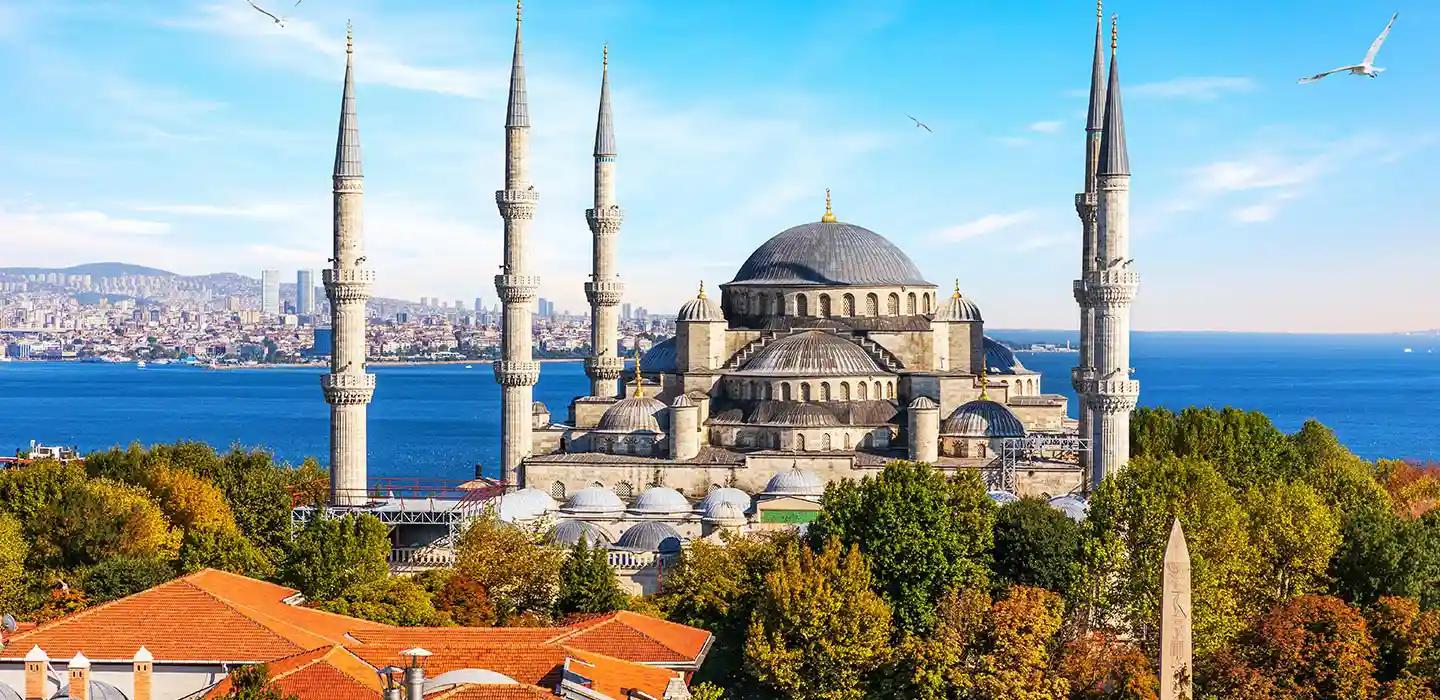
The Blue Mosque
The elegant, apparently weightless domes and delicate mosaic tiles that are the hallmark of the traditional Ottoman design are well known to admirers of outstanding ottoman architecture. Beginning in the early 1400s, these buildings—which were predominantly religious in nature—transformed the Turkish landscape by striking an ideal equilibrium between heaven and earth, light and shade.
Known as the foremost architect of his day, Mimar Sinan designed more than 300 structures around the nation by fusing the opulent features of Byzantine architecture with the conventional Turkish design. But Sedefkâr Mehmed Aa, one of Sinan's students, is responsible for Turkey's greatest achievement.
For the last 400 years, a beautiful structure has stood as a declaration of Ottoman glory and success in the middle of Istanbul. It is a stunning structure that was erected close to Hagia Sophia and on the location of the Byzantine emperors' residence.
Construction
Get your fill of Tukey & customize your trip to the Blue Mosque here.
August 1609 saw the beginning of the mosque's construction. Sedefkar Mehmet Aa, a pupil of the eminent architect Sinan, was the architect in charge. The Topkapi Palace library still houses the eight-volume comprehensive workbook from the building.
The final imperial mosque in Istanbul was inaugurated in 1617 in Sultan Ahmet I's presence, not 1616 as stated on the mosque's gate. Since Sultan Ahmet's successor Mustafa I had not yet signed the final accounting, the edifice had not yet been completed. The Sultanahmet Mosque blends two architectural styles to their greatest advantage. It combines conventional Islamic architecture with Byzantine features that were derived from the nearby Hagia Sophia.
You should enter the mosque by the Hippodrome side rather than the park entrance if you want to completely appreciate its architectural design. The Blue Mosque appears to be on par with the Hagia Sophia at a first impression. The giant courtyard, which is roughly the same size as the mosque itself, is the largest of all Ottoman mosques, and the six minarets—more than any other mosque in Istanbul—create a stunning silhouette, especially when floodlit after dusk. There are many elegant curves thanks to an ascending system of domes and semi-domes.
The inner walls of the mosque are decorated with more than 20.000 handmade Iznik ceramic tiles that feature more than 50 tulip motifs. The location is known as the Blue Mosque because of its hue. Traditional-style tiles may be seen on the lower levels, while images of flowers, fruits, and cypresses can be found on the gallery level. The tiles used in the later stages of building are of varying quality due to the high demand for them. Recycled tiles from the Topkapi Palace's Harem, which suffered fire damage in 1574, were utilized on the wall of the back balcony.
More than 200 stained glass windows and many chandeliers within the mosque offer light. To keep spiders away from the chandeliers and prevent cobwebs from inside the mosque, they placed ostrich eggs on them. The carpets that cover the flooring were contributed by obedient individuals, and they are constantly changed out when they wear out.
The imperial loge, which is supported by ten marble columns, and the mihrab, which is built of exquisitely carved and sculptured marble, are noteworthy features of the main area.
How to Get to the Blue Mosque?
Explore the marvels of turkey and the tranquillity of the blue mosque with our Turkey Tour Packages and Turkey & Greece Tours.
There are several more queries, such as whether there is an admission charge, the dress code, and where to store my shoes, among others.
Here are all of these straightforward questions' solutions:
Plan your visit to Istanbul's Sultanahmet neighborhood for mid-morning arrival if possible. Five times a day, beginning with the first call to prayer at dawn and ending with the last one at dusk. Every time people pray, the mosque is closed for 90 minutes. Avoid going to a mosque during prayer (especially Friday noon prayer) or within 30 minutes of the ezan being recited from the mosque minarets.
Put your shoes in the plastic bags supplied at the door before entering the mosque by removing them first (Free of Charge). In accordance with Muslim custom, everyone must do this before entering a mosque. Additionally, there is no fee to enter the Blue Mosque.
3. Cover your head when entering the Blue Mosque if you are a woman.
At the entrance to the Blue Mosque, hats are freely distributed. Equivalent amounts of the cloth cover should dangle on either side as you place it on top of your head.
Take one side, covering your shoulders as you wrap it around your neck and throw it behind your back. The covering is simply intended to conceal your hair; avoid obscuring your face.
As soon as you enter the mosque, keep calm and avoid using flash photography. Avoid gazing at or photographing people who are praying since this is a place of worship. Visit the mosque silently and with respect. You can return head coverings to the on-duty personnel and place used plastic bags in designated trash bags at the mosque's exit.
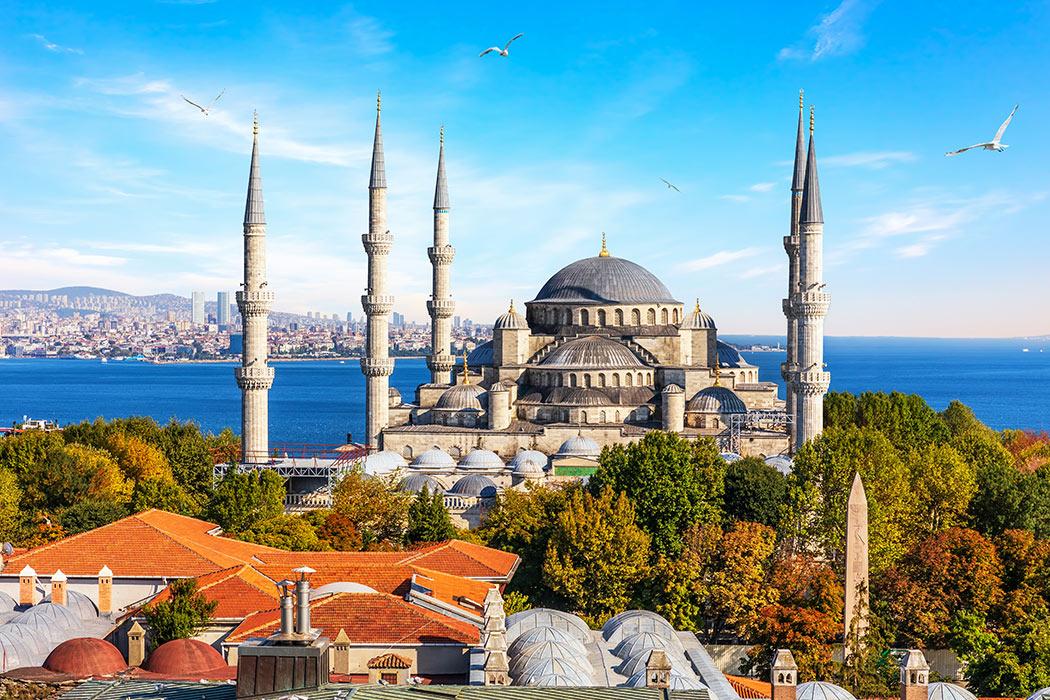
related tours
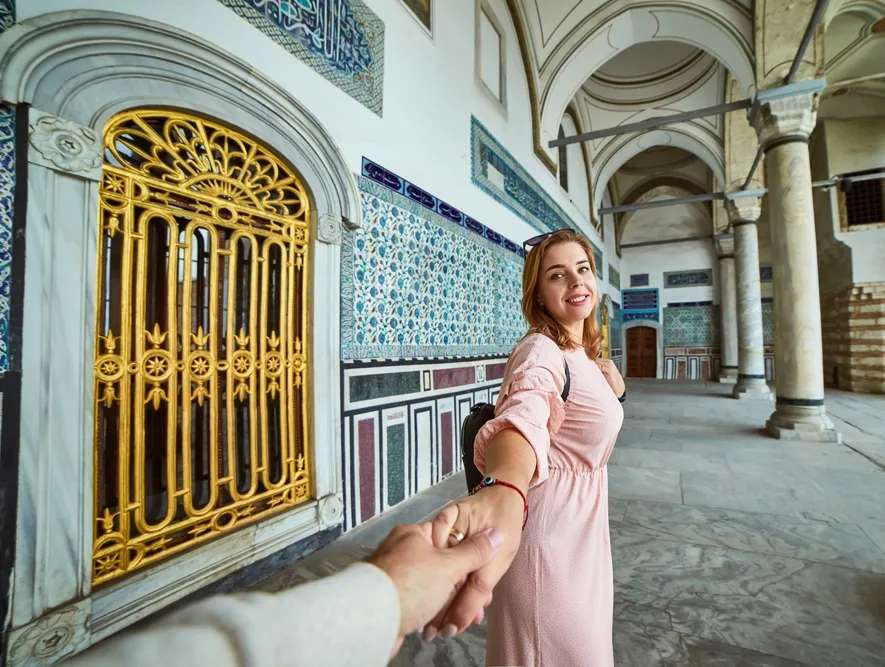
Turkey Trave Packages: Istanbul City Break Vacation
4 Days / 3 Nights
From
$ 470
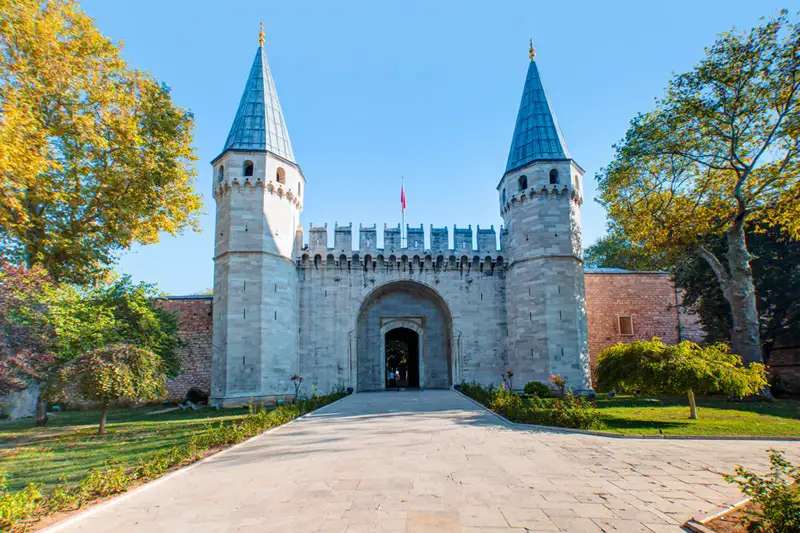
Istanbul Travel Package
5 Days / 4 Nights
From
$ 787

Turkey Travel Packages: 6-Day Istanbul & Cappadocia Tour
6 Days / 5 Nights
From
$ 1020
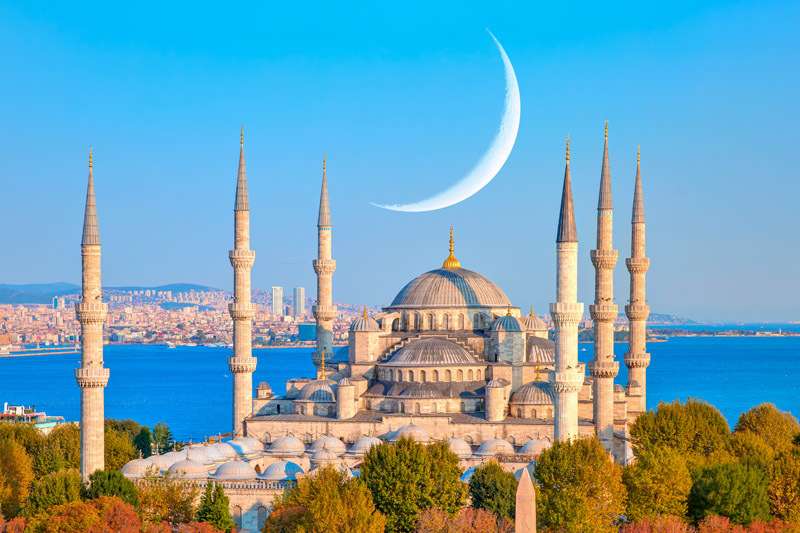
Turkey, Egypt & Jordan Majestic Tour
18 Days / 17 Nights
From
$ 3605
